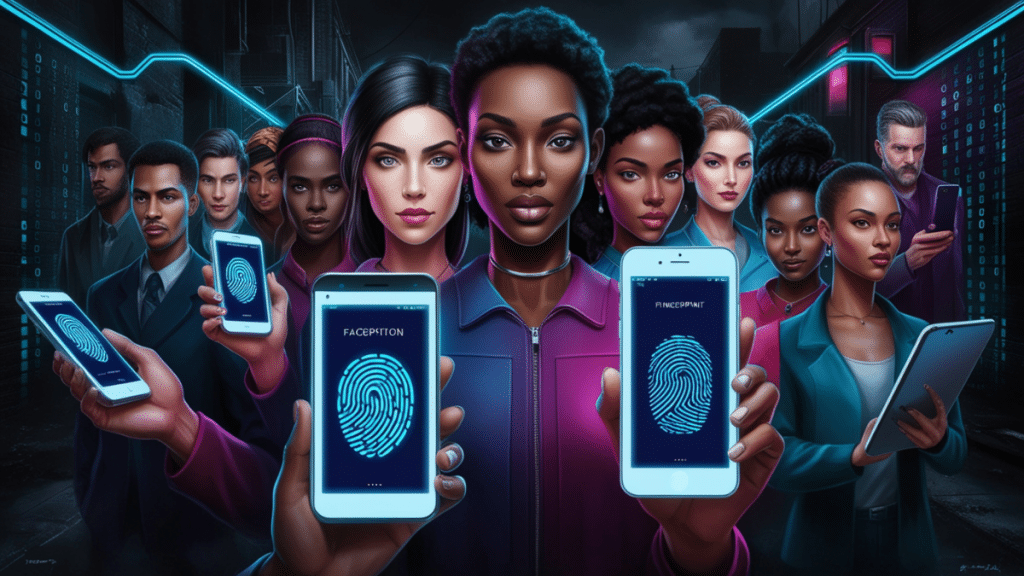Biometric authentication refers to the use of your fingerprint, face, voice, or iris to unlock something, eliminating the need for a password. It’s faster and easier—but is it truly safe? To make a safer bet, take a look at the latest match previews and predictions on football and basketball.
Why It Became So Popular
It takes less than a second to unlock your phone with your thumb while holding a coffee. That’s the appeal. Biometrics are built into phones, laptops, and even doors. Companies love it because it’s easy for users. People love it because they don’t have to remember anything. Convenience won.
A Marketing Dream?
Let’s be real. Part of why biometrics exploded is hype. “Unlock with a glance!” sounds sleek and cool. Tech companies pushed the feature hard. And we bought in. But under the flashy marketing, the real question is—how safe is this method?
Passwords vs. Biometrics: The Face-Off
Passwords can be guessed or stolen. But they can also be changed. Biometrics? Not so much. You only have one face. One set of fingerprints. If those get copied or leaked, you’re out of options. That’s where the tension lies. A unique key that can’t be reset sounds risky.
The Problem With Permanent Data
Imagine someone hacks your fingerprint data. Unlike a password, you can’t change your finger. That data could follow you forever. It’s like losing a house key that can’t be replaced. This is what makes breaches so serious in the biometric world.
When Biometrics Go Wrong
There have been cases where phones were unlocked by similar-looking relatives. Or when fingerprints were lifted from glass surfaces and used to trick sensors. These aren’t just spy movie plots. There are real flaws in real systems. And they show that no system is perfect.
A Friendly Example
Using Face ID with a mask can be tricky. It might not work well or take more time. Some people with injuries or disabilities might have trouble with biometric systems, too. It’s easy for most, but not for everyone.
Security in Layers
Cybersecurity experts say don’t use just one lock. Biometrics work best with other ways to protect you. When using a face ID, try to use a simple password with the face ID, or when using a fingerprint, use a very short PIN as well. This way, it’s harder for hackers to break in.
So Who’s Keeping the Data Safe?
It depends on the system. Apple keeps your fingerprint or face data safe on your device. Some Android phones do this too. But other systems save it on outside servers. That can be risky because your data is stored in more places and might be exposed.
Regulations and Legal Gray Areas
Here’s something many people don’t know—laws about biometric data are still catching up. In some places, companies must ask permission to store it. In others, they don’t. Some users can sue for misuse. Others can’t. It all depends on where you live. This makes the legal side of biometrics unpredictable.
What Happens During a Breach?
Let’s say a company you trusted gets hacked. Your face data or fingerprints leak. What happens next? You can’t “take it back” or change it. That’s why protecting this data is so critical. Some experts argue that companies using biometrics should face bigger penalties if they fail to guard it.
The Role of AI and Deepfakes
As AI tools grow smarter, so do the risks. Deepfakes can create fake faces. Voice clones can mimic your speech. Hackers can use these tools to fool systems that rely on recognition. This means the bar for “secure enough” keeps getting higher.
Still, Biometrics Beat Bad Passwords
Let’s not ignore one thing: Most people use terrible passwords. “123456” is still common. So, for the average user, biometrics are often safer than weak or repeated passwords. They offer a low-effort upgrade in daily security.
The Trust Factor
At its core, biometric security is about trust. You’re trusting your device, your software, and the companies behind them. When it works well, that trust pays off in speed and ease. When it doesn’t, the damage can be long-lasting.
Looking to the Future
Developers are already working on the next steps. Some phones now scan your palm veins or measure your heartbeat pattern. Others are using behavioral patterns, like how you swipe or walk.
Is It Worth the Risk?
That depends on how you use it. For unlocking a phone, it’s probably a fair trade. For banking apps, maybe add a second step. For anything sensitive, think twice. Use biometrics as a tool, not a single point of defense.
Tips to Stay Safe
Here’s what you can do:
- Keep your device updated
- Use two-factor authentication when possible
- Don’t rely on biometrics alone
- Avoid letting untrusted apps access your biometric data
Biometric tech is here to stay. It has clear benefits but it also has some risks. When you understand the risk, you start making smarter choices and you know when to use your password and when to use your body.
